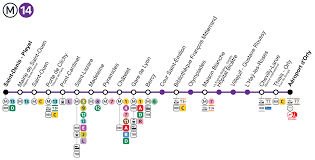The Evolution and Importance of Metro Transit Systems

Introduction
Metro transit systems play a critical role in urban mobility and are vital for reducing traffic congestion and minimizing carbon emissions. As cities across Canada prepare to accommodate growing populations, the expansion and improvement of metro systems have never been more relevant. With recent investments aimed at enhancing public transit infrastructure, understanding the current trends and developments within metro systems is essential for both residents and policymakers.
Recent Developments in Metro Systems
In 2023, major Canadian cities like Toronto, Vancouver, and Montreal have made significant strides in augmenting their metro systems. In Toronto, the Greater Toronto Transportation Authority (GTTA) has announced an expansion of the Ontario Line, which will connect communities from the Ontario Science Centre to Exhibition Place. This project, costing approximately CAD $10.9 billion, is expected to alleviate congestion on the existing subway lines and encourage public transit usage.
Similarly, Vancouver has implemented improvements to its SkyTrain system, including the addition of new trains and stations. The TransLink authority estimates that these enhancements could increase ridership by 25% over the next decade by making travel more efficient and accessible for residents across the region.
Environmental and Economic Impact
The expansion of metro systems is not only crucial for improving transportation efficiency but also plays a significant role in the fight against climate change. A report by the Canadian Urban Transit Association indicates that public transit systems, including metros, collectively contribute to reducing greenhouse gas emissions by up to 45 million tonnes annually. This aligns with Canada’s commitment to achieving net-zero emissions by 2050 and emphasizes the importance of investing in sustainable transit options.
From an economic standpoint, expanding metro networks can also stimulate local economies. By providing improved access to jobs, businesses, and amenities, effectively linked metro systems can attract new investments and promote urban development. Furthermore, every dollar spent on public transportation can yield a return of approximately four dollars in economic benefits, according to studies conducted by the American Public Transportation Association.
Conclusion
As Canadian cities continue to experience growth, the expansion and enhancement of metro transit systems will remain a top priority for urban planners and government officials. The positive effects of increased public transportation accessibility extend beyond improved mobility; they also encompass environmental benefits and economic growth. As cities invest in their metro systems, the significance of these developments will resonate with residents who rely on public transit for their daily commutes, ultimately leading to a more sustainable and connected future.





